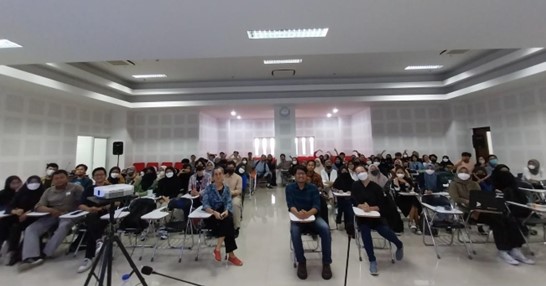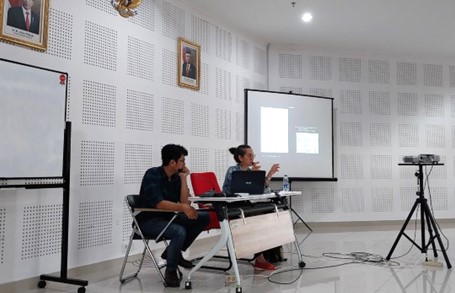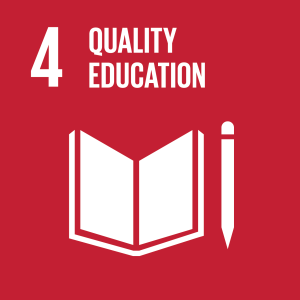
Friday (23/09/2022), the Javanese Literature Study Program successfully held a public lecture with the topic "Yogyakarta << Versailles of Java >> Architectural History and the Making of Heritage City” which is located in the Soegondo building room 709, Faculty of Cultural Sciences, Universitas Gadjah Mada. This public lecture took place from 01.00 pm to 03.00 pm WIB and was attended by students of the UGM Javanese Literature Study Program who were interested and enthusiastic about the Javanese architectural history of Yogyakarta City.
The public lecture was guided by Nurmalia Habibah, S.S., M.A., a lecturer in Javanese Literature at UGM in the field of philology, as the Master of Ceremony (MC) and Imam Prakoso, S.S., M.A., a lecturer in Javanese Literature at the UGM in the field of linguistics, as the moderator.
The speakers at this event were Dr. Helene Njoto, a researcher specializing in the history of early modern Indonesian art and architecture, particularly in the early Islamic and early colonial periods (around the 15th century to the first half of the 19th century). Since 2021, she has been part of the École Française d'Extrême-Orient (EFEO) in Jakarta, an institution under the French Ministry of Higher Education and Research that studies classical Asian civilizations through the humanities and social sciences.
(Dr. Helene Njoto (at the center) is presenting the material)
In this seminar, Dr. Helene Njoto gave a presentation to participants about the architecture of the city of Yogyakarta before the outbreak of the Diponegoro War. “After Prince Diponegoro was arrested in 1833, Yogyakarta was in a very state of collapse. However, from the ruins, it can be guessed that the City of Yogyakarta was once a great kingdom. Although not up to 1/10 of its glory remains, Yogyakarta's glory can be seen from the many large stone ruins. Even in the records of Carel Sirardus William van Hogendrop, the 46th Governor General of the Indies, Yogyakarta was referred to as Versailles of Java.” she said.
In addition, Dr. Helene Njoto also highlighted the interesting fact that Taman Sari, one of Yogyakarta's tourist destinations, was the work of a Javanese architect, not a Portuguese architect. “About 2 years ago, it was said that Taman Sari was built by a Portuguese architect because Taman Sari was built with bricks and specs. Bricks and specs are assessed very differently from wooden architecture which is synonymous with Javanese architecture. However, if examined more closely, the reality is not like that.” she explained.
She continued, “The first ruler of Yogyakarta, namely Prince Mangkubumi, was the builder of the largest construction site by a Javanese ruler to date, Taman Sari. The real Taman Sari is wide and currently only 1/3 remains, the rest is gone. Taman Sari began to be built in the early 1750s with an area of about 80 square meters, to the southeast of the center of the Yogyakarta Palace. Taman Sari's architect was Prince Mangundipura. Prince Mangundipura even visited Batavia twice to seek inspiration for the construction of Taman Sari.”
After Dr. Helene Njoto's presentation, the moderator opened the question session. The participants of this public lecture showed high enthusiasm by asking various questions related to Javanese architecture.
Dr. Helene Njoto gave a message to students to want to visit relic sites from the past. “For literature students, of course, there are many things and elements that can be captured. Not only what is contained in the manuscripts, but also depicted on the remains, namely in the reliefs. Therefore, do not hesitate to go to the field. While they are still young and while these sites still exist and can be visited.”
By convening this public lecture, it is hoped that it can generate motivation and open participants insights about Javanese architecture, especially for those who are interested in making it an object of research.
"Hopefully this public lecture can add to our insights about how magnificent Javanese architecture is and can also be a motivation, especially for fellow students who will make Javanese architecture an object of research," said Imam Prakoso, S.S., M.Hum., in the closing session the public lecture.





